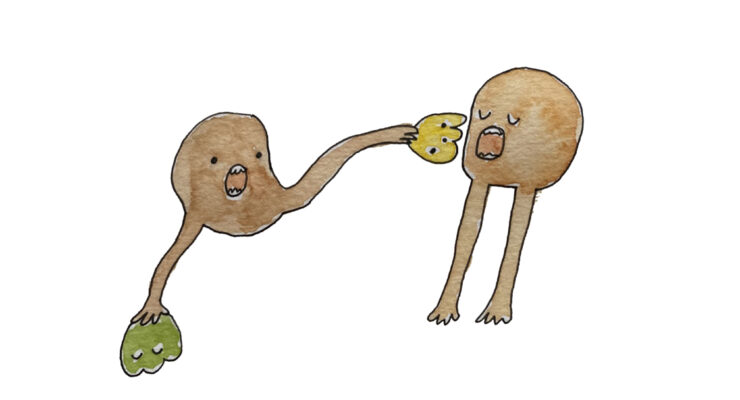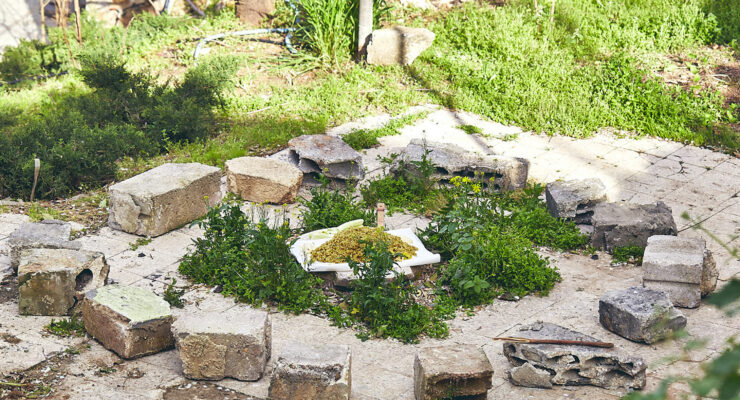“The emotional element”
Maud de Rohan Willner is a French/British creative food & experience designer based in London. Focusing on the senses, her aim is to tell stories and create interactive experiences for her guests to remember. Combining food and design she wants to explore innovative ways to convey messages and transmit emotions, through textures, colours, flavours, aromas and more.
After finishing her BA in Sustainable Product Design at Falmouth University, UK, Maud proceeded to do an MA in Food Design and Innovation in Milan. "I’ve always somehow combined food & design and only realised this could become my work at the end of my studies! I started with supper clubs, a format that worked well in London, and now this is evolving to more varied events, for brands and companies as well as private events, workshops and many more exciting things," Maud says about her work.
How would you describe the field of food and design?
For me food design is anything that is design around food: service design, interior and spatial design for eating spaces, packaging design, menu design, tableware design and I can go on… The approach I like to have is to combine different types of design (graphic, technology, culinary, spatial, interactive, product…) and create an experience around food. I watched a TED talk by Jinsop Lee about how enhancing each sense for any experience will mean the user will remember it a lot more. This has greatly influenced my way of thinking and I always try to do that for my events. My approach for events with brands, companies and any sort of event is that through food you can translate the lifestyle and the values of the client via a sensory experience and it will help their customers remember it a lot more. This is done by aiming at the emotional element and as sensory human beings this is very important.
"Designers can tell stories through their work and raise awareness about issues that we need to talk about more."
Do you think designers working with food should address political and social issues?
Of course (if they feel comfortable with it). I feel that through food and design we can convey messages about education, culture, social issues and politics. There is a strong movement speaking up about the issues of being a woman in the food industry at the moment which is great. Designers can tell stories through their work and raise awareness about issues that we need to talk about more. Food culture is rising and it’s so interesting to see designers being inspired by their own food culture or exploring other food cultures from around the world. We used to want everything to be the same and now we have realised how unique each culture is and how strong it can be so we need to bring that out. Education is an important aspect of design, we can teach so many things via our design tools whether it’s food, furniture, an installation or a space.
Colour changing cocktails for the Islands of Curiosity events

First course for an Edible Winter Dream

How do you see the future of Food and Design in London?
Food and design in London is really big right now. I think we are one of the most advanced cities in that sense, there are so many food festivals, events, experiences etc popping up all the time. I seem to find talks about food every week and try to attend as many as possible! I recently went to a talk hosted by the YBFS (Young British Foodie Awards) gathering different people in the food industry to talk about the future of the restaurant business in London. Another event I’ve just been to was about Food identity and social change, with Martha Ortiz, an amazing chef from Mexico and Tasha Marks from AVM Curiosities. Museums are doing more exhibitions about food & design, like the V&A’s current “FOOD: Bigger than the Plate” exhibition, in which they are exploring the whole food system, from compost to table. Restaurants in London are thinking more about their visual design, especially with the rise of the Instagram foodie scene, making their interiors (and exteriors) aesthetically pleasing as well as their menus and their food plating. Both food and design are becoming more linked in a way that I feel will keep evolving!

Menus for the Secret Urban Suppers.
What would you say is the best Food and Design example?
It’s tricky to think of the “best” food and design example. I think the best is when more influential brands and people are working on this and using design tools for research, such as IKEA for example exploring the future of the meatball, but also Marije Vogelzang of course as the pioneer of food design, questioning how far we can go and I respect her a lot for that!
_
Read more about Maud on her website or Instagram.










